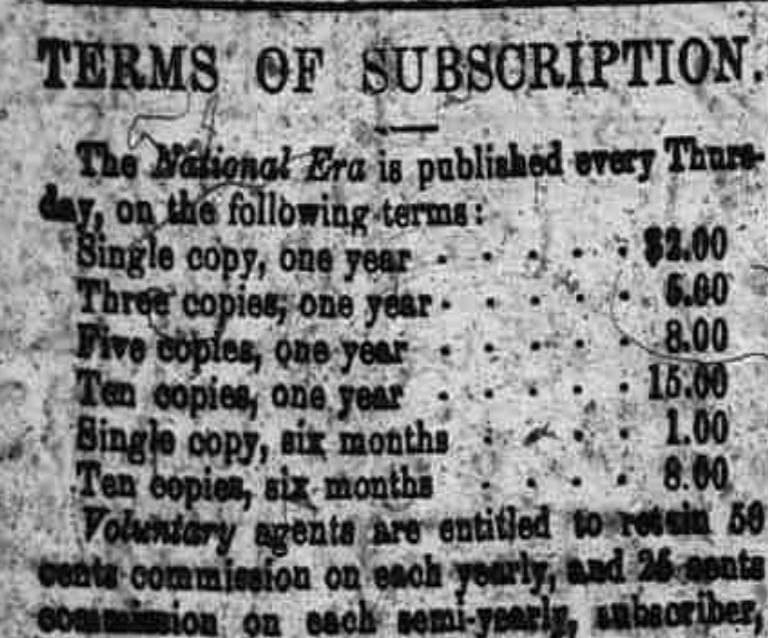Some Background on The National Era
The National Era was a highly respected and well-read anti-slavery newspaper that ran for 13 years from 1847 to 1860. Its founder, Dr. Gamaliel Bailey, made two editorial choices that significantly differentiated this publication from its peers at the time:
Firstly, The National Era was considered to be a “gradualist” newspaper with respect to the abolition of slavery in the United States; Bailey hoped for this newspaper to widely circulate in both the North and the South (which it successfully did) and that that “its great aim,” in the words of its publisher, Limmaeus Noble, “[was] a complete discussion of the Question of Slavery, and an exhibition of the Duties of the Citizen in relation to it” (Krywicki 125). There were, expectedly, both critics and supporters of this gradualist strategy, but most seemed to agree, even before the end of the civil war, that Bailey’s intentions were clearly and productively reflected in the paper’s contents and editorial practices (130).
The second element that distinguished the National Era from other anti-slavery newspapers of its day was its prioritization of literature. Harriet Beecher Stowe’s Uncle Tom’s Cabin was famously first published in serial form by The National Era, but this was no special case; it was, rather, reflective of an intentional editorial strategy to give first-order priority to literature alongside the more expected forms of content like, “Current Events, Congressional Proceedings, General Politics” (Krywicki 125).
This commitment to literature is particularly important to this exhibit’s curation of The National Era’s presentation of international rebellions: “In using foreign revolutions to disparage slave ownership and highlight the central role of free labor in local affairs, they also illustrate a network of understanding constructed around the expressive possibilities afforded by a distinct domestic conflict: slavery. It is not simply that the National Era's contributors appropriated foreign conflicts to discuss local affairs, but that their terms of expression were grounded in, perhaps limited to, the rhetoric of domestic debates” (Krywicki 128).
Within this exhibition, I hope to curate the presence and presentation of these foreign revolutions in a way that transcends suggestions of the periodical’s editorial intent and historically locked meaning. However, Bailey’s efforts in The National Era to go beyond journalistic reporting and relevant information by attempting to “illustrate networks of understanding” though the prioritization of literature and international affairs are both laudable for its time and guiding for ours: (anti)slavery was in the literature, in the discursive practices, in the United States and everywhere else – “networks of understanding” might, then and now, be thought as a productive problem of knowledge where we repeatedly and extensively discover that (anti)slavery always already was in the physical and intellectual places where it wasn’t.

